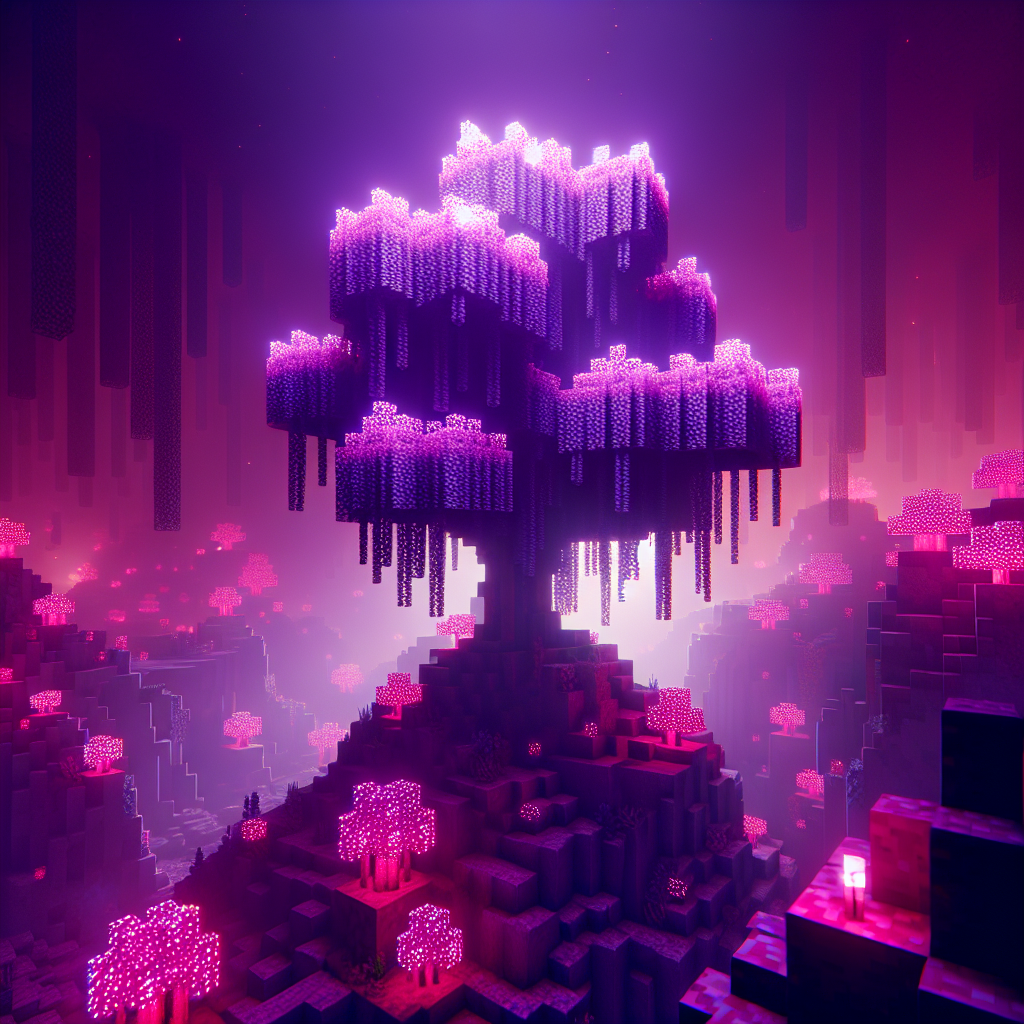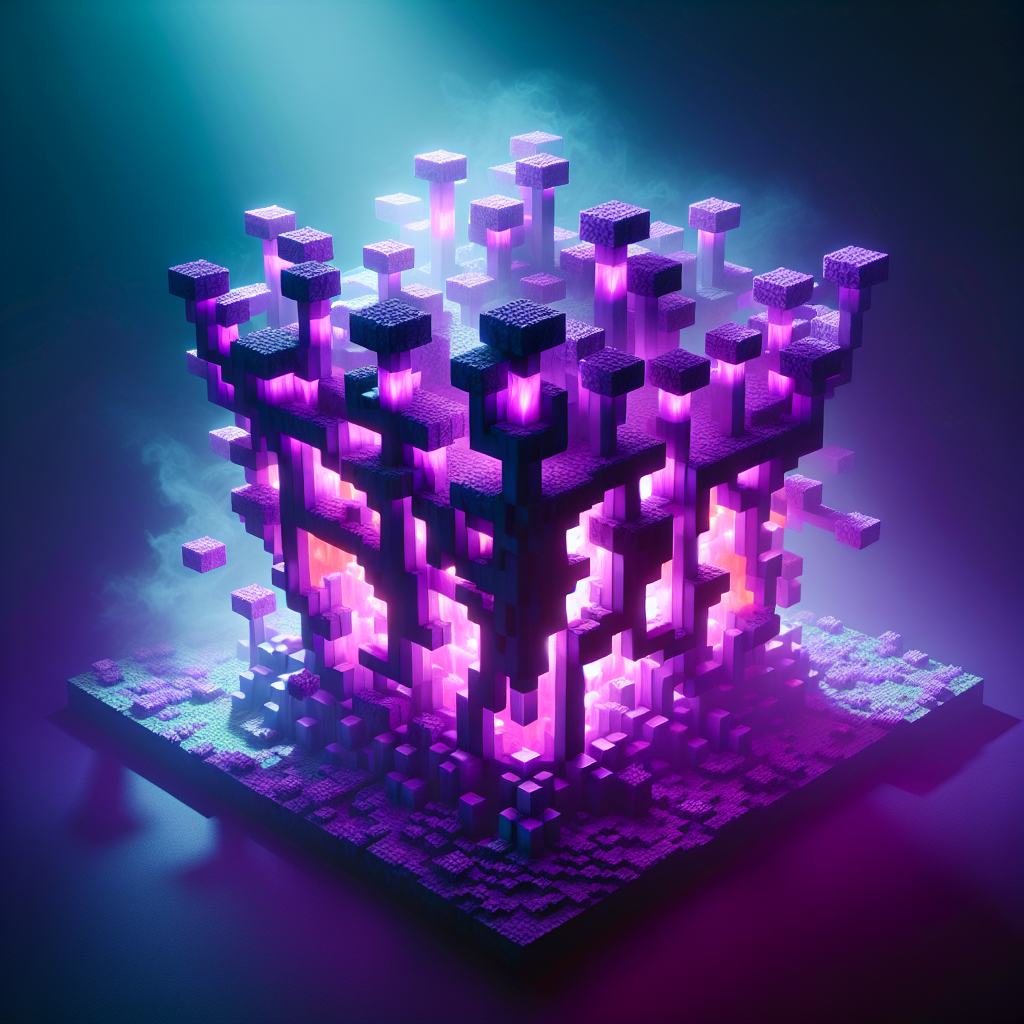With a world replete with fascinating, hidden intricacies, Minecraft offers its gamers an immersive experience. Underneath this vast universe, lies an astonishingly prevalent yet underappreciated substance – the Minecraft Mycelium. This article will take you on an exciting journey into the heart of the game, specifically focusing on the enigmatic wonders of the Minecraft Mycelium. Its abilities, functionalities, and very existence within the game’s ecosystem promises to add another layer of thrilling insights and perspective to your gaming experience. So, prepare to explore the captivating secrets of the Minecraft Mycelium.

Understanding Minecraft Mycelium
Minecraft, a sandbox video game, offers a plethora of materials that you, as a player, can explore, gather, or craft. One such unique item is the Mycelium.
Concept behind minecraft mycelium
Mycelium was inspired by the real-life concept of the same name, which refers to the vegetative part of a fungus or fungus-like bacterial colony. In the context of Minecraft, mycelium is a block similar to grass. It is primordially purple and distinct from other surface blocks, adding a distinctive hue to the game’s landscape.
The uniqueness of minecraft mycelium
What sets Minecraft mycelium apart is its ability to spread over dirt blocks, transforming them into more mycelium, akin to how grass blocks work. Furthermore, it’s the only block on which mushrooms can spawn regardless of light levels, making it a unique agricultural resource.
Origins of Mycelium in Minecraft
The world of Minecraft is continuously evolving, and the introduction of mycelium illustrates this perfectly.
First introduction of mycelium within game updates
The initial introduction of mycelium came with the official update 1.0.0 during the Minecraft Java Edition. The adventure update brought about this remarkable block, giving the game a fresh depth and presenting players with new opportunities for exploration.
Historical significance of mycelium event
The event marked a major milestone because it introduced a new biome —the mushroom biome. The arrival of mycelium signalled the developers’ intent to make Minecraft a constantly evolving universe, complete with its own ecosystem and life forms. The mycelium event testifies to the game’s dynamic, expansionist nature.
The Biome of Mycelium: Mushroom Islands
Mycelium are primarily found in a specific vegeographic, the mushroom islands.
Minecraft biome where mycelium naturally grows
Mycelium is native to mushroom islands or mushroom fields, which are the rarest non-variant biome in Minecraft. This biome’s surface is completely covered in mycelium, adding to the uncommon and otherworldly appearance of the terrain.
Ecological role of mycelium in mushroom islands
In the ecological context of the mushroom islands, mycelium assumes a crucial role. It suits the survival and growth of both large and small mushrooms regardless of daylight or other light levels. Moreover, its ability to spread to adjacent dirt blocks maintains the overall ecology of the mushroom islands.
The Aesthetics of Minecraft Mycelium
Aside from its practicality, mycelium is genuinely a visual treat in the game’s diverse block library.
Physical appearance and differences from other blocks
Mycelium blocks are perhaps one of the most recognizable blocks in Minecraft, owing to their distinct purple hue speckled with spots. They also have unique animated textures. Compared to other blocks like grass, the color palette and feel of mycelium give it an appealing, alien-like quality.
Visual appeal in building projects and environments
This aesthetic trait allows you to use mycelium as a decorative tool for your building projects. Whether you desire to create complex labyrinths with a peculiar ambience or simply utilise it to add color and diversity to your landscapes, mycelium can provide a unique touch in both.

Mycelium and Mob Spawning
Mycelium blocks hold a distinctive place in Minecraft, not just in terms of aesthetics or growth but also in terms of spawning mobs.
Role of mycelium in spawning mobs
In Minecraft, ‘mob’ is a shortened term for ‘mobile’ and represents all the moving creatures. Mycelium has a unique characteristic — unlike most other blocks, it allows the spawning of mushrooms, both giant and tiny, at any light level. Moreover, no hostile mobs can spawn in the mushroom biomes, making them a safe habitat.
Unique spawning behaviours related to mycelium
Interestingly, mycelium also impacts the spawning of mooshrooms, the game’s mushroom-farming equivalent of cows, which only spawn in the mushroom biomes. This association between mycelium and the game’s mobs adds a unique layer of interaction and complexity to the gameplay.
The Gameplay Mechanics of Mycelium
As a player, understanding mycelium’s gameplay mechanics is key to utilizing this block to its full potential.
Basic mechanics of mycelium in game play
Mycelium’s basic in-game functionality involves its ability to spread to other dirt blocks, changing them into mycelium blocks. However, it only spreads to dirt blocks that have no plants or grass above them and are exposed to light.
Advanced tricks and techniques involving mycelium
Understanding mycelium spreading, the light conditions it requires, and how it interacts with other entities in the game allows for advanced gameplay techniques. For instance, since mycelium can overwrite grass, you can create an area for extensive mushroom farming by deliberately placing mycelium next to grass blocks and letting it spread.
Growth and Spreading of Mycelium
Mycelium’s ability to grow and spread is what makes it a fascinating addition to the game.
How mycelium spreads in Minecraft
In Minecraft, mycelium can spread and grow over any dirt block that is adjacent (to the side or above/below) to a mycelium block, transforming it into another mycelium block. This transformation happens randomly and can only occur if the dirt block has a light level of at least nine and no block above it.
Factors affecting the growth and spread
Mycelium’s growth and spread can be affected by several factors, such as the available light level, the presence of blocks above the soil, and the competition with grass.
Exploring Mycelium Farming
Mycelium farming can become an interesting and profitable venture in the game, with right techniques.
Benefits and challenges of mycelium farming
Farming mycelium can have manifold benefits — like fabricating an aesthetic landscape and creating a safe haven from hostile mobs. However, it could also be challenging, primarily due to the slow spreading rate of mycelium and its strict growth conditions.
Effective techniques for farming mycelium
Effective farming of mycelium involves understanding its growth conditions and utilizing them. For instance, you should ensure a light level of at least nine and prevent any block placement above the dirt blocks you intend to convert into mycelium.
Mycelium in Minecraft Modding
Mycelium has found a significant place in the world of Minecraft modding.
Use of mycelium in popular Minecraft mods
Mycelium has been used in several popular Minecraft modifications (mods) that further expand and diversify the gameplay. For example, some mods speed up the mycelium spread rate or allow it to transform other block types.
Creative ways modders utilize mycelium
Modders have found creative ways to employ mycelium in their developments. From crafting mod-exclusive items using mycelium to developing new biomes where mycelium blocks play a central role, these variations contribute to mycelium’s intriguing nature.
Mycelium: Facts and Myths
Like any other feature in Minecraft, mycelium has a set of facts and misconceptions associated with it.
Common myths and misconceptions about mycelium
Perhaps the most common misconception about mycelium is that it can transform any block into a mycelium block when, in reality, it only affects dirt blocks. Many players also mistakenly believe that it spreads faster than it truly does.
Fun facts and trivia relating to mycelium
Mycelium adds a fun trivia aspect to Minecraft’s gameplay. For example, did you know it is the only block on which mushrooms can grow and spread at any light level? Or that the name “mycelium” is derived from the network of fungus hyphae in real-world biology? These unique aspects make mycelium a fascinating element of Minecraft’s intricate web.
